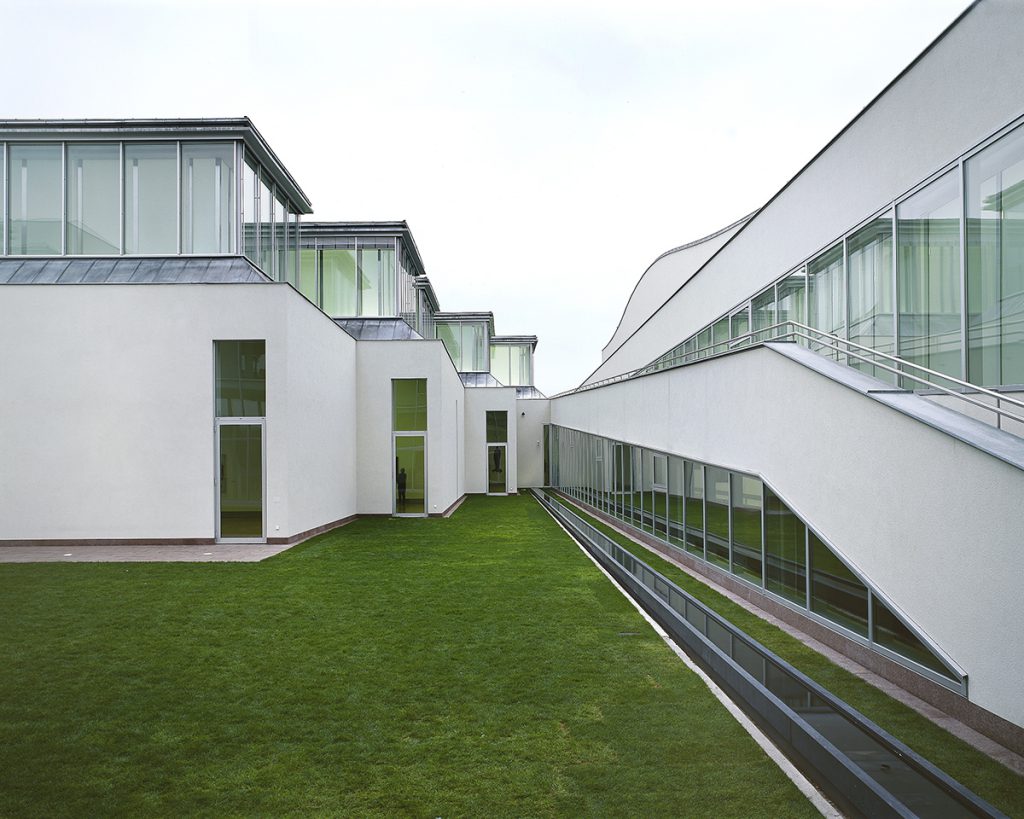
Heinz Tesar, Museum Sammlung Essl, courtyard
© Architekturzentrum Wien, Sammlung, photograph: Margherita Spiluttini
After almost eight years, the Essl Collection Museum, one of Heinz Tesar's major works is now open to the public once again as the Albertina Klosterneuburg. The architect passed away in January 2024, and the reopening had already been announced.
Back in 1987, when Heinz Tesar was commissioned to construct the Schömer administration building in Klosterneuburg by the founders of a large chain of DIY markets, Agnes and Karlheinz Essl. The building featured offices as well as gallery space for the art-loving couple’s growing collection. They turned to Tesar again less than ten years later as the collection, which now comprised several thousand artworks, needed more space. This led to the construction of Austria’s first private museum, which opened in 1999 as the Essl Collection Museum as a venue for the presentation of contemporary international and Austrian art in about 200 exhibitions, until 2016. The building has been used as a depot by the Albertina since 2017.
The museum blends into the setting as a right-angled triangle positioned between the Danube floodplain and the railway line. Two tapered tracts with skylit halls form the exhibition space, which was originally 3,200m² and is now 2,800m², bringing visitors closer to the art through this interplay of movement, space and light.
Tesar worked on the intersection of architecture and art, making him an exceptional phenomenon among Austrian architects. The starting point for his design process were sketches or notes of his “first thoughts”. As “pre-architectures”, these always opened up new paths for the subsequent design. He clearly rejected planning processes that were subject to the conceptual constraints of the building sector: “Architecture is about thinking as much as shaping.”
Born in Innsbruck on 16 June 1939, Heinz Tesar studied architecture under Roland Rainer from 1961 to 1965 at the Academy of Fine Arts in Vienna. He was employed in the office of Wilhelm Holzbauer from 1969–1973. In 1973 he founded his own architectural practice in Vienna. From 1983 onwards, Tesar was a much sought-after visiting professor at leading universities in the USA, Canada, Germany, Italy, Austria and Switzerland. In 1999, Heinz Tesar wrote about the Essl Collection Museum: “The museum is a spatial figure for the arts. Installation of the artwork is a balancing act in space, whereby the invisible remains a quality of the visible. Thoughts are accumulated as material objects in collections. The seemingly incomparable becomes comparable, a sequence of similar things shows differences. Time becomes visible. Museums are public containers, their architecture begins before the architecture.”
